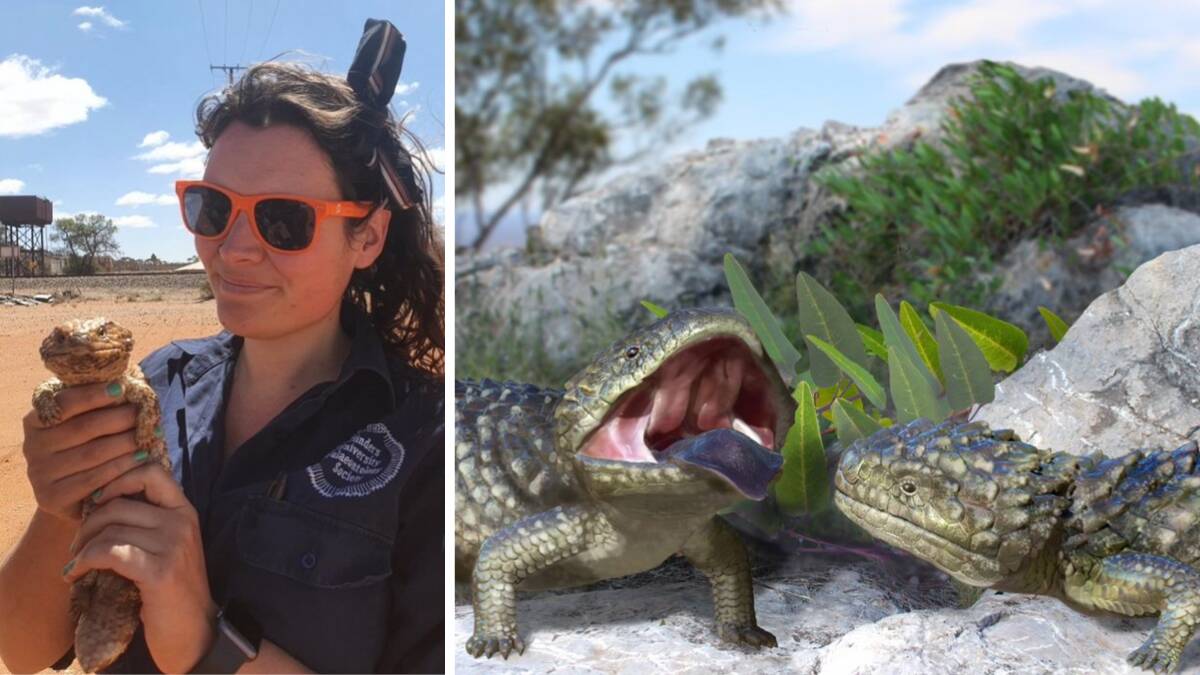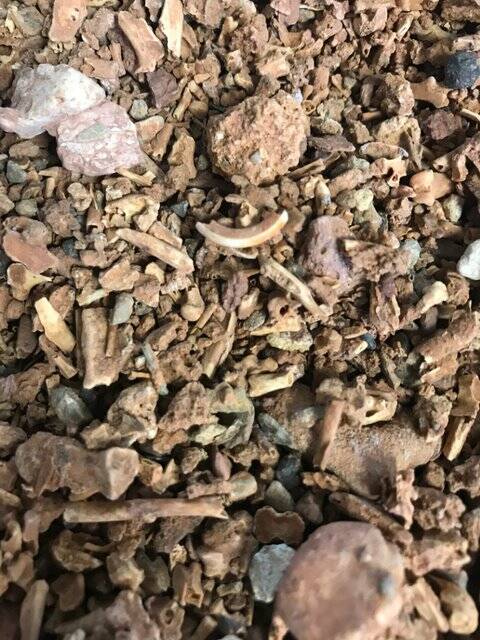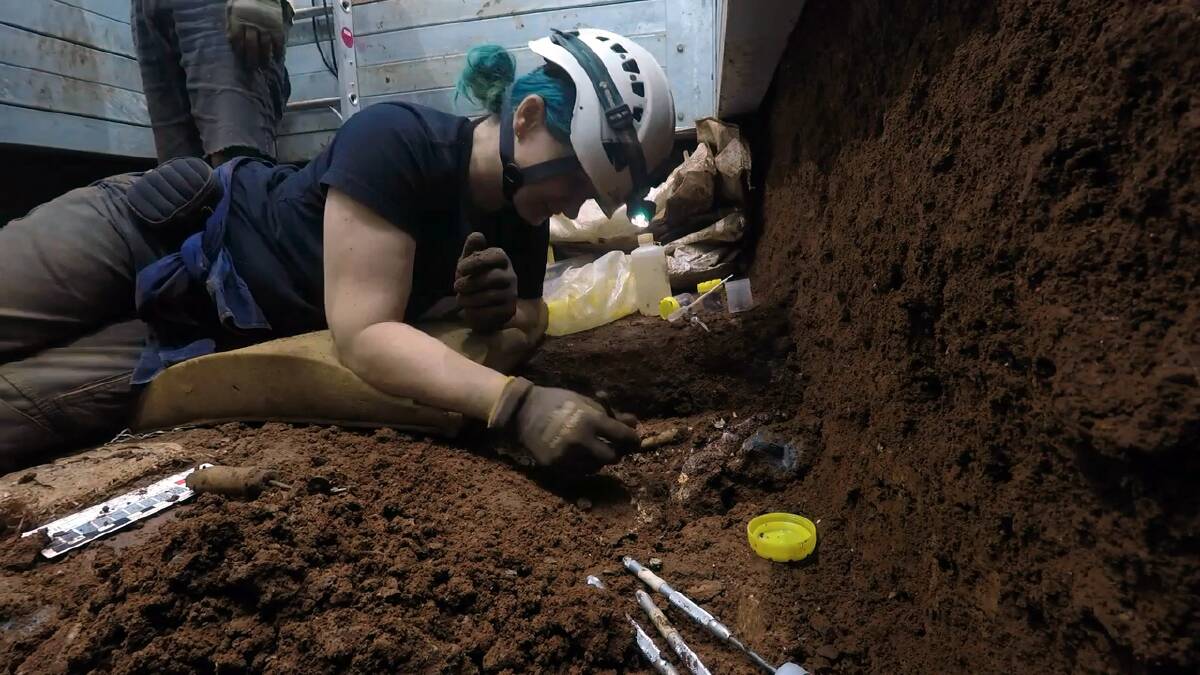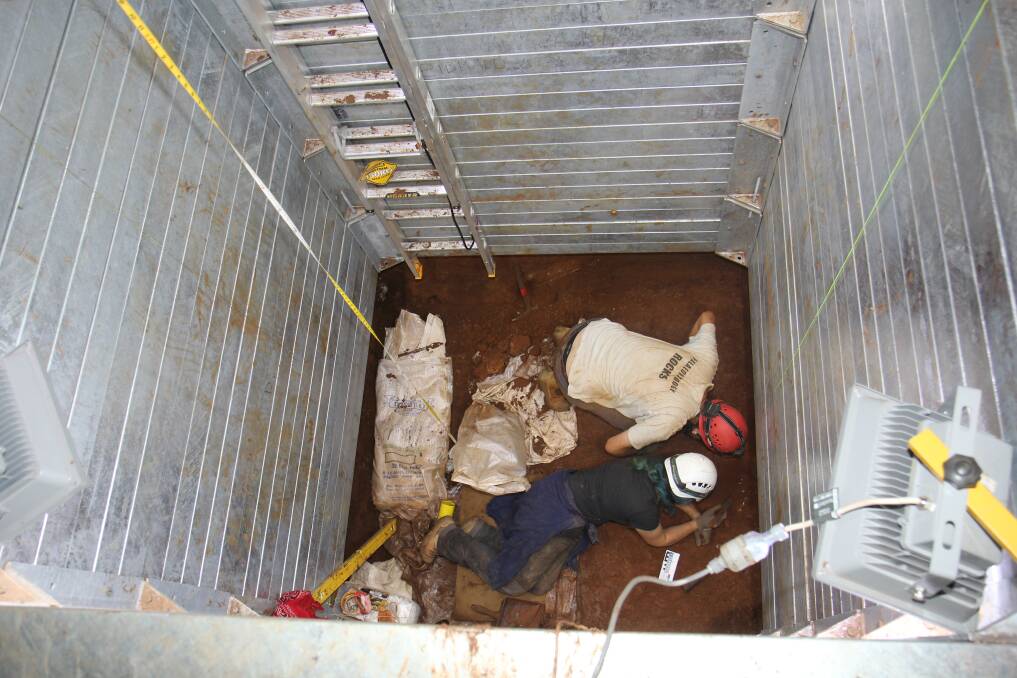The fossil of a 'mega skink' weighing around 1000 times that of today's garden skink has been discovered in Wellington caves, a new example of the importance of the cave system to our palaeontology history.
Subscribe now for unlimited access.
or signup to continue reading
Tiliqua frangens, a giant, horned, vegetarian megafauna shingleback lizard - nicknamed Mega Chonk for its chunky (aka "chonky") dimensions - would have weighed 2.4 kilograms, compared with its 2-gram living relative.
The fossil was pieced together from bones from different animals found in Wellington caves, near Dubbo, as well as existing pieces of fossil stored in museums in eastern Australia.
Dr Kailah Thorn, technical officer at the Western Australian Museum, began studying the megafauna lizard for her PhD at Flinders University in Adelaide in 2016.

She said the species - which looked like a broad-headed blue-tongued lizard and measured around a metre from its snout to the base of its tail - had been discovered twice on previous occasions between around 2009 and 2013.
"The first time they'd found a single piece of fossil jawbone, in one of the spoil heaps outside of the phosphate mines at Wellington Caves, and the jaw was so weird and so chunky and unusual, that it got its own genus," Dr Thorn told the Daily Liberal.
"And then, a few years later they found a skull bone in the Big Sink deposit, which is a different cave out at Wellington and they gave that a different name because they couldn't connect it to the jaw."

In 2016, Dr Thorn began her PhD and asked colleague at Flinders University, research staffer Dr Diana Fusco - who was working on an excavation at Wellington - to check if she could find any other fossils related to the lizard.
"It turns out there's a lot of it, so we were able to find more jawbones, more skull bones and all the pieces that fit between them - and some of the post cranial [bones] ... some leg bones and a plating from this animal as well," Dr Thorn said.
Some of the fossils are estimated to be around one or two million years old, through to 47,000 years old. The animal would have gone extinct around the same time as other megafauna including marsupial lions, Diprotodons, short-faced kangaroos, huge goannas and a mega eagle.

Dr Fusco has been conducting ongoing research expeditions to Wellington Caves' Cathedral Cave, and said the team had dug around 5 metres deep - going back 80,000 years - in a possible 10.5 metres of sediment that harks back to an (as yet) undetermined age.
Dr Fusco said the caves were where western science first encountered megafauna remains, making the area historically-significant. She said local First Nations people had likely known about the fossils for millennia beforehand.
"It's kind of the birthplace of Australian palaeontology, really," Dr Fusco told the Liberal.

Many extinct megafauna species were first found in Wellington, including a marsupial lion and a marsupial tapir.
Dr Fusco is working on a timeline of megafauna extinction.
She encouraged Wellington and Dubbo locals to visit the caves and walk past the Cathedral Cave excavation.
IN OTHER NEWS
"They're such an amazing resource for understanding Australia's path and you know, what changed in our environment and in the composition of the fauna as well," she said.
"We can look at what in the environment changed and how it impacted these animals and hopefully we can use some of that information to help protect and manage biodiversity into the future because I mean, if you want to look at climate change happening in an ecosystem, we have perfect examples in these kinds of fossil assemblages."
Reading this on mobile web? Download our news app here. It's faster, easier to read and we'll send you alerts for breaking news as it happens.


